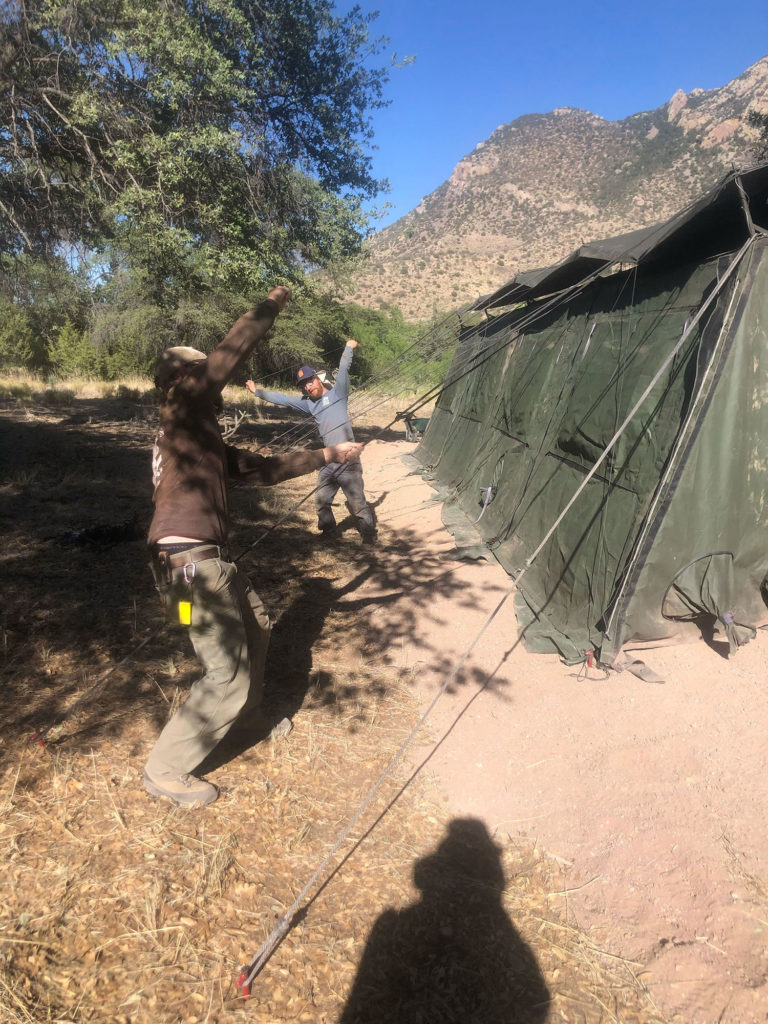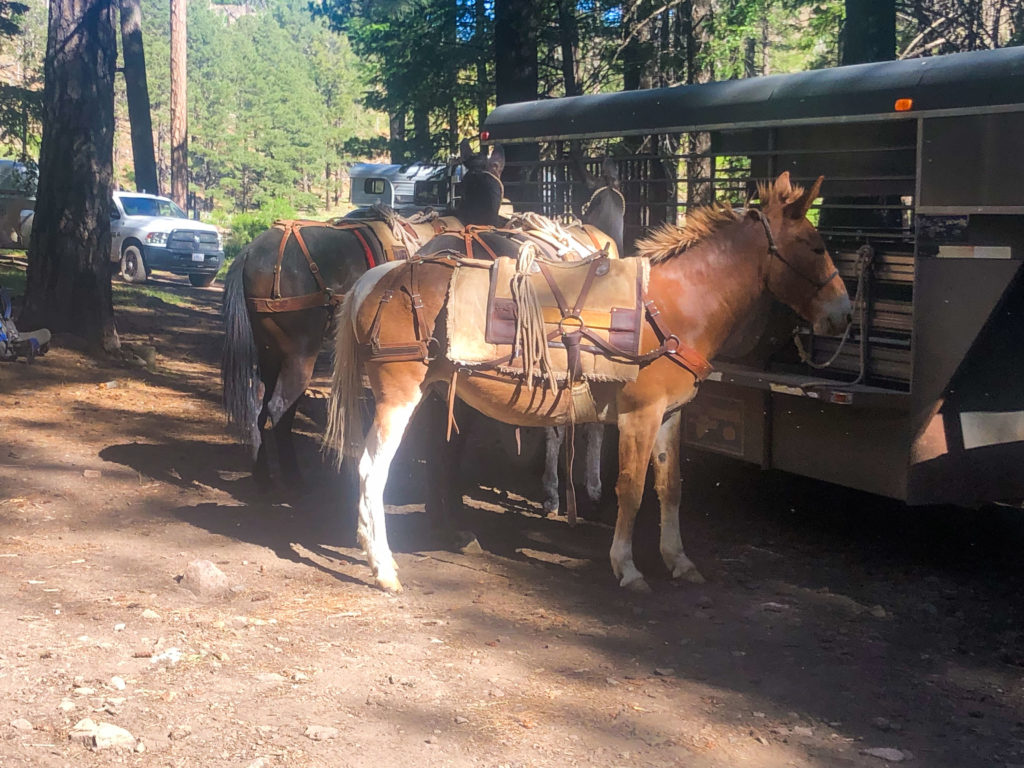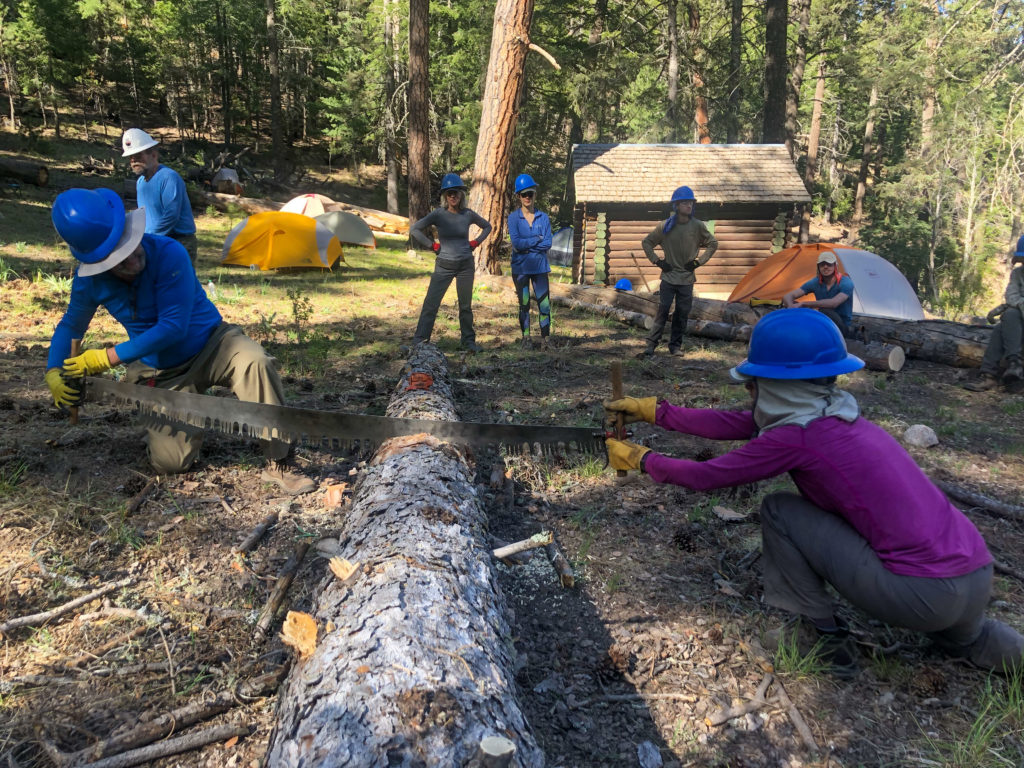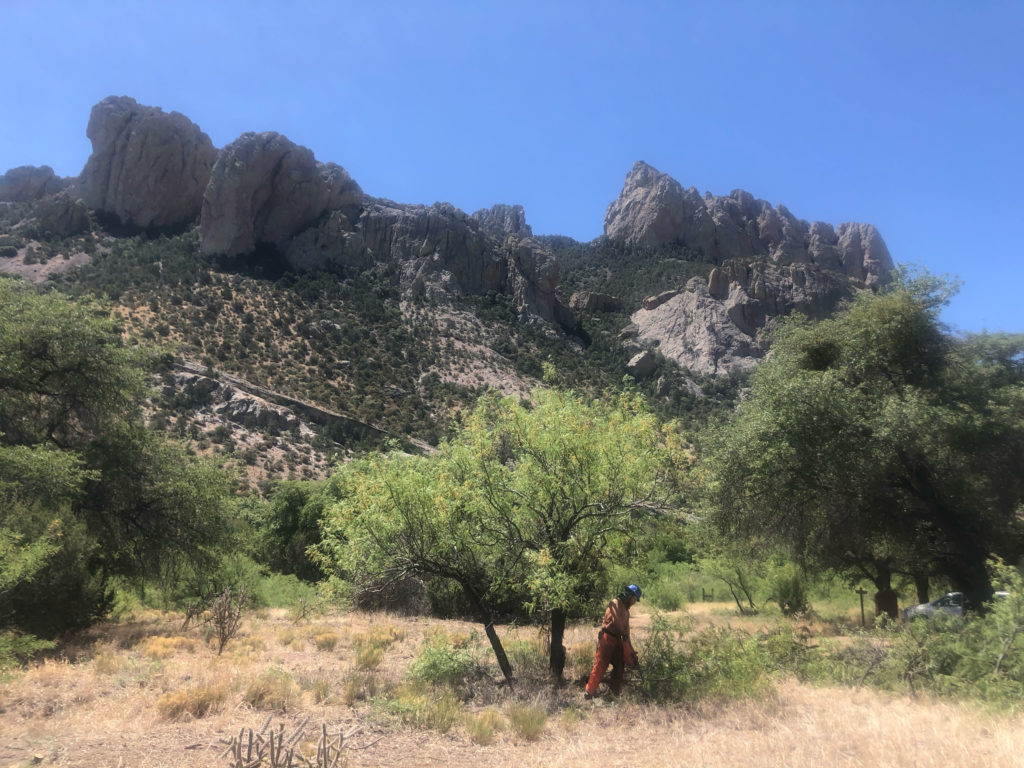
Last week, the friendly folks of the Wild Stew Field Crew made their way down to the Chiricahua Mountains again, this time in sunny and gorgeous Cave Creek Canyon. The heat was on and the saws were rippin’ as the crew took on a variety of different tasks to prepare for the upcoming Youth Conservation Corps (YCC), reduce wildfire risk, and guide a Sierra Club trail crew.
May and June is prime season for wildfires in Arizona, as months have passed since the winter rains and the summer monsoons are not expected until mid-June at the earliest, bringing moisture to the lowest levels of the year. This arity combined with rising temperatures as summer begins make for a flammable formula (see climate graph for Tucson, below). To defend against such fires, we cleared away potential fuels in the form of young overgrown mesquite and tall dead grass around the RV residences and historic structures of the Cave Creek Visitor Information Center (VIC). We also trimmed dead or small low limbs from established mesquite and oak trees in order to take away ladder fuels that could take a ground fire up into the crown of these trees. The brush from these cuttings were collected into burn piles, which fire crews from the Forest Service can come by and safely burn during seasons of lower fire risk. These practices make it so when fire inevitably passes through this area, it will be of much lower intensity and far less likely to grow to a size that could destroy human structures or large established trees. In this way, the removal of potential habitat from the environment works to preserve habitat for the long run.
This firewise prevention work was also helpful for clearing camping space for the upcoming summer YCC program, a collaboration between Wild Arizona and the Coronado National Forest. Starting in June, ten high school students from southeast Arizona and around the country will converge on the Chiricahua Mountains to participate in six weeks of working, learning, and playing, led by members of the Wild Stew Field Crew. We are very excited to host this program for a third year, and there is still much work to be done to prepare for a successful, fun, and productive summer.
While the YCC crew will be living elsewhere in the Chiricahuas on the weekends, the work week will be spent on maintaining and constructing trails in the Cave Creek Canyon area. The first part of that work will be while car camping near the VIC so the firewise clearing made perfect sense to also make space for setting up enough tents for the crew and crew leaders to live in. With the help of staff from the Coronado National Forest’s Douglas District, we also cleared a pad for and erected a 40’ military tent to use as a communal and cooking space. Following the military’s directions felt like working on a massive lego set.
For two days out of this hitch, crew leader and Chiricahua trail work expert Jonathan Patt headed up to Rustler Park to meet with a group of volunteer trail workers on a trip with the Sierra Club. They backpacked into the Chiricahua Wilderness to Cima Cabin, where they will spike out and work on trails in the area for a week. Jonathan’s experience as well as pack support from the Forest Service should ensure that they will be well set up for success.
On the final work day, the Wild Stew flagged out a route for a new nature trail connecting the Cave Creek Canyon VIC to the Silver Peak trail, which the YCC will construct in less than a month. We had a great opportunity here to practice thinking about how a trail is best constructed, being able to start from scratch. Here the real creative side of trail work comes into play, as you have to consider ease of construction, structural sustainability, environmental impact, and user experience in your design.
To top it off, on Saturday we all participated in the annual Garden Party outside the VIC. Various organizations from the Portal-Rodeo area had tables set up to share what they do, live bluegrass music was played, and delicious tacos and other treats were served in this celebration of community engagement. Wild Arizona had a table set up to share the work we do, and there was a crosscut saw activity for the public, as folks came up to try their hand at cutting a round off a log with the help of a Wild Stew crew member. The party also allowed us to chat with many of the interesting and impassioned people from an area we have spent much time working, such as founding member of the Arizona Wilderness Coalition Paul Hirt, Wild Arizona board member Kim Vicariu, representatives from the Bisbee Science Lab, and some local snakes from the Chiricahua Desert Museum.
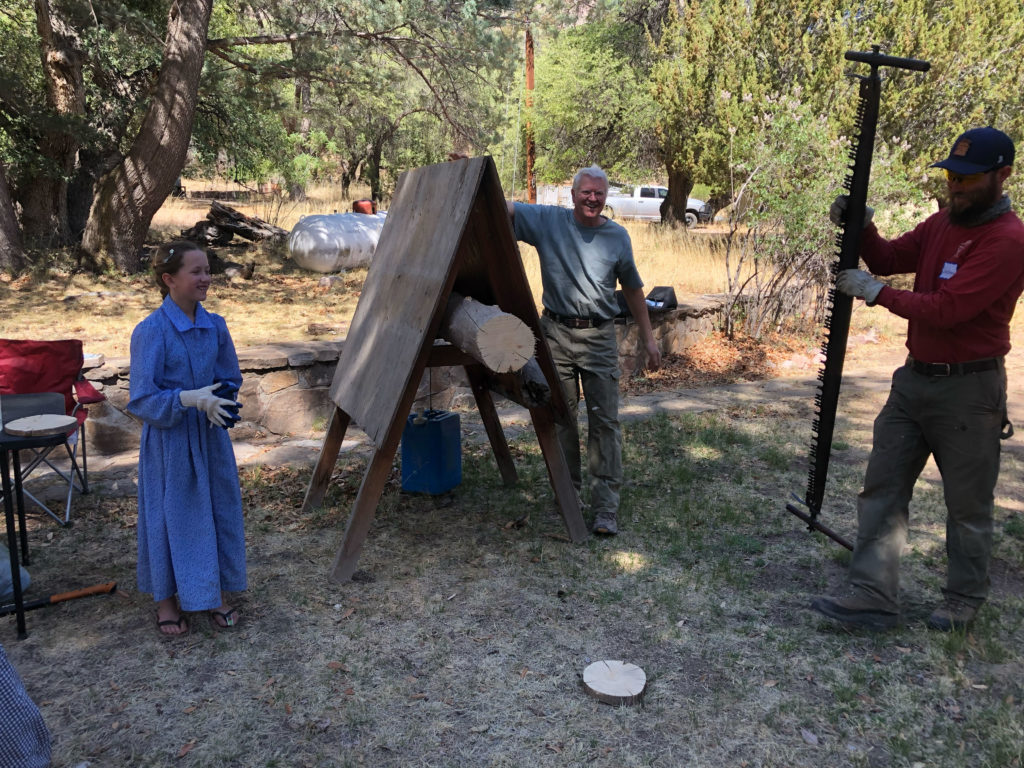
Yes, it was a busy time, with so many activities going this last hitch. The variety helped break the monotony of cutting and moving piles of mesquite in between everything else. The heat also played a major role, just in time for when we chose to shift our work schedule to summer mode (6am to 4pm instead of the previous 7am to 5pm). Daytime temperatures hitting the high 90s led to gallons of ice cream being purchased from the Portal Cafe and many dips taken in the Cave Creek pools beside our temporary home at Idlewild Campground. We also used the extra evening time to explore some of the fantastic historical and archaeological sites that offer a window back in time at many locations around Cave Creek Canyon.
Another bonus of working in Cave Creek Canyon was being right near the RV home of Wild Arizona’s deputy director and stewardship director, Brain Stultz. It was great to have his help and expertise at any time, which was used to learn how to properly stack burn piles and advise outreach to the accepted members of the YCC. He even shared his BBQ prowess with us one evening and let us watch the classic movie The Princess Bride in his air-conditioned home theater.
Next week, the Wild Stew Field Crew is back to the Chiricahuas, this time to Rucker Canyon to maintain the Monte Vista Trail, which climbs up to the Monte Vista lookout. Stay tuned for more exciting tales of the trail crew life.


